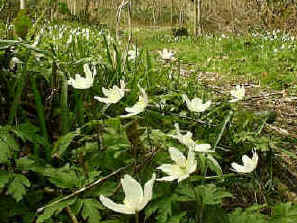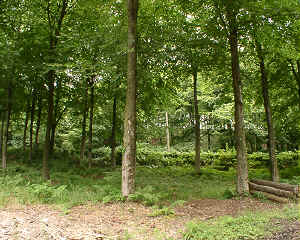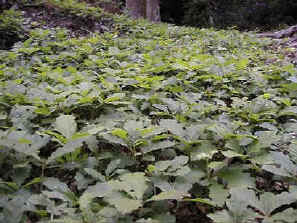 |
New
plantings will obviously need to provide tracks and rides to facilitate access for
management and possibly for harvesting within the woodland. The orientation and width of the rides and paths laid out in a planted woodland can have a great effect on the eventual level of biodiversity within the woodland (more here). In most of Britain, East/West oriented rides will provide many more hours of sunshine for plants and animals located on the ride than a North/South oriented ride. This has a dramatic impact on microclimates, as well as on light levels for plants. Plants such as Wood Anemones (left) prosper in such areas. |
| . | |
 |
The type of trees planted will obviously depend on the intended purpose of the resulting woodland. Where timber is the desired product, then conifers will be the first choice for planting because they will produce a much more rapid yield. The actual species planted will depend on local site conditions such as soil type, rainfall and microclimate. It will also depend on the anticipated demand for timber of particular species. |
| . | |
 |
Broadleaf trees such as Oak and Beech, although many times slower growing, may be planted for specific uses such as furniture making. However, this is a very long term investment with no guarantee that the market for the timber will still exist when it is finally ready for harvesting. Native broadleaf trees will also be planted where conservation is the main aim of woodland creation. |
| . | |
 |
If the main aim of tree planting
is conservation, the type of trees already growing in the surrounding area will give a
good indication of the tree species which will prosper in the area. The oak seedlings
under the parent Oak tree (left) would give a good indication of suitability for this species. Planting only those species which are suited to the local soil type and
climatic conditions will greatly reduce the amount of intervention and management needed
in the woodland. For example, it would be uneconomic to try to plant an Ash woodland on an
acid soil. The trees would do poorly in competition with other tree species better suited
to the soil type. |